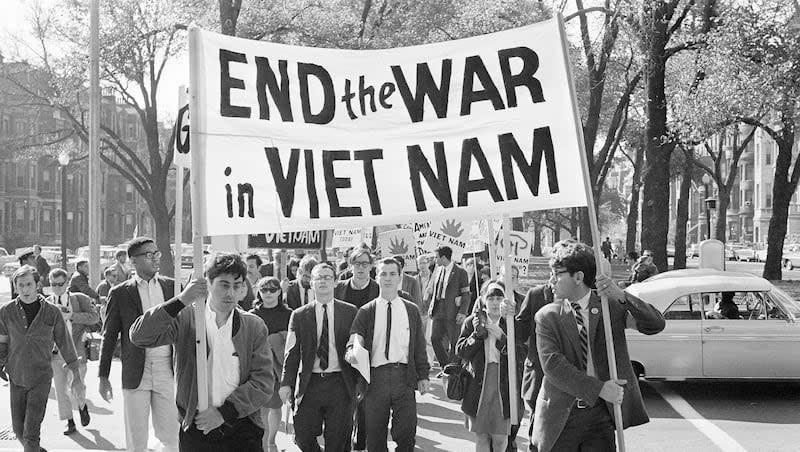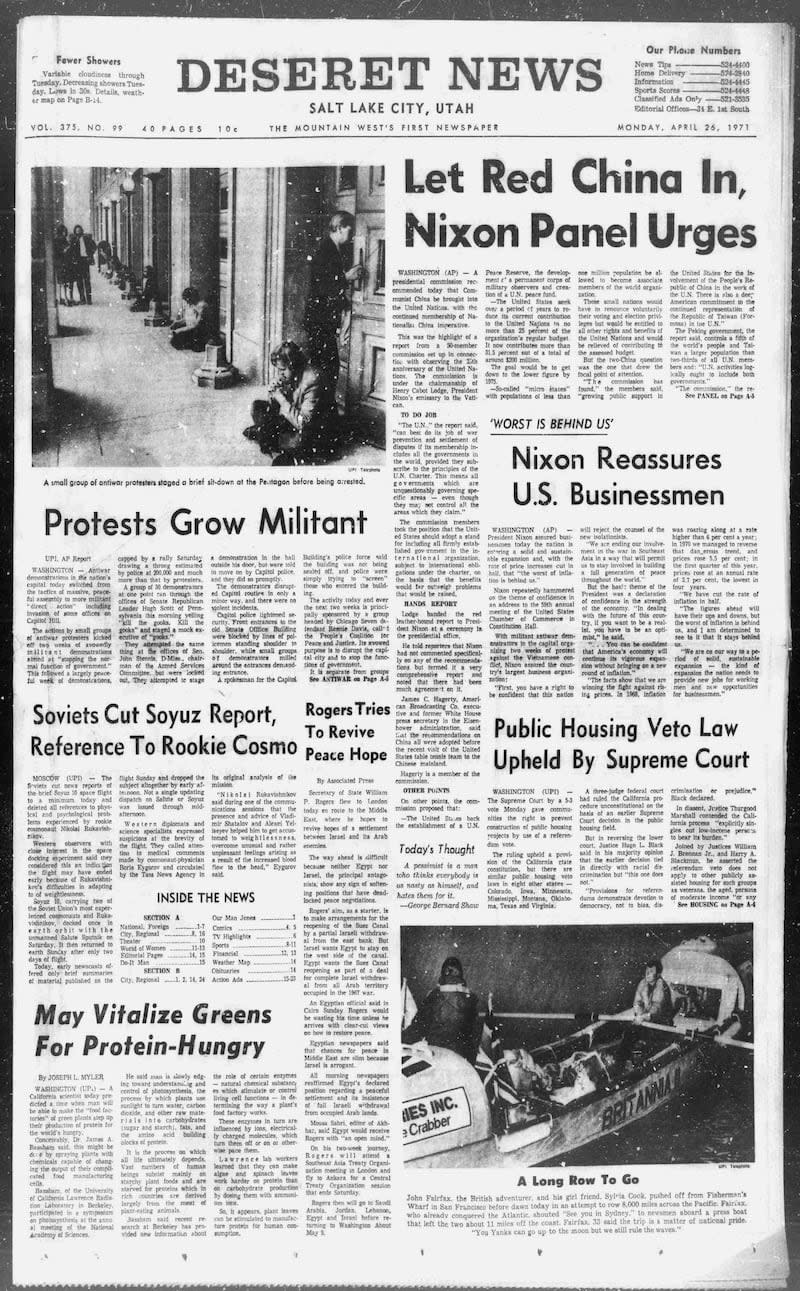Deseret News archives 1971: Vietnam protests impacted how public opinion shapes policy

A look back at local, national and world events through Deseret News archives.
For nearly a decade, protests about U.S. involvement in the Vietnam War occupied the evening news and the pages of daily newspapers around the world.
From roughly 1964 to 1973, many young Americans demonstrated their displeasure with the government’s involvement in a conflict in a faraway country. One such moment occurred on April 25, 1971, as told through Deseret News archives.
Per news reports, as many as 200,000 antiwar protesters for the most part peacefully “marched up Pennsylvania Avenue and rallied at the U.S. Capitol to protest the nation’s long involvement in the Vietnam War.”
The protest continued for several days, becoming more confrontational as the weekend wore on, per United Press International and Associated Press reports, including “more militant ‘direct action’ and the invasion of some offices on Capitol Hill.”

According to the top story, the April 25 demonstrations were aimed at “stopping the normal function of government.” Some demonstrators ran through the offices of Senate Republican Leader Hugh Scott of Pennsylvania, later unsuccessfully trying the same thing at the offices of Armed Services Committee Chairman John Stennis, D-Miss.
In other reports, protesters burned effigies of President Richard M. Nixon, who that same weekend also had to reassure U.S. business leaders that runaway inflation would not get any worse, while considering a presidential commission recommendation that the U.S. allow Communist China to join the United Nations.
Talk about very little changing in the world over the past 50 years.
In Utah, protests were less volatile, including on the state’s college campuses.
According to the Utah History Encyclopedia, “Students at other Utah campuses, including Westminster College, Utah State University, Weber State and Southern Utah State gathered to listen to opponents and proponents debate the war, while at Brigham Young University some professors used class time to discuss the war with their students.
“An estimated 250 counter-demonstrators met at the City and County Building in Salt Lake City on the same day (Oct. 15, 1971) for a two-hour rally.”
Some of the more poignant chronicling of those days, told from a variety of perspectives, included Vietnam veterans who viewed the antiwar protests often with heavy hearts.
Filmmaker David Zeigler shared his perspective in “Sir! No Sir!” which was reviewed in the Deseret News in 2006.
In 1990, several Deseret News writers compiled a perspective on how the Kent State riots in May 1970 spurred change in protests on college campuses.
“At University of Utah, the Kent State killings touched off rallies attended by thousands of students; a sit-in in the administration building; an attempted takeover of the student newspaper, The Daily Utah Chronicle, by protesters; the burning of a wooden building already scheduled for demolition; an explosion in the National Guard Armory; and a student vote on whether to shut down the U.
“Emotions ran high for over a week. Rumors spread wildly that police were invading the campus, and although the situation had the potential of escalating dangerously, it never did,” the news report detailed.
As a side note, well-known Deseret News sports writer Hack Miller (no relation) served as a war correspondent in Vietnam, making two trips to the country, according to his obituary.
Exactly five years later, sports and war protests converged. During an April 25, 1976, National League baseball game between the Los Angeles Dodgers and Chicago Cubs, protesters moved out onto the field and began burning a U.S. flag. Cubs star outfielder Rick Monday came running from his position to swipe the flag and earn his place in American lore.
In 1998, then-Utah Sen. Orrin Hatch referenced Monday’s effort as he worked to get an amendment passed that would ban flag desecration.

